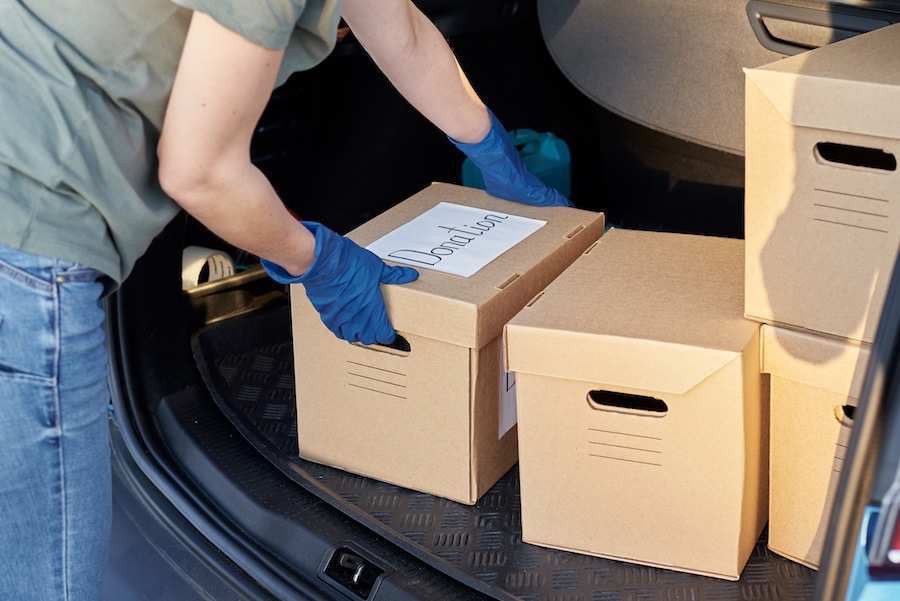
Donating surplus inventory to charity is also good business
If you’re a hardware retailer, even after we come out of the pandemic, one of your great ongoing challenges is disposing of unwanted surplus inventory. Chances are, you’re discounting, liquidating, and auctioning merchandise that doesn’t sell—labor-intensive work that yields little profit. Good news: there is a better way. Have you ever considered donating your products to charity? It’s called ‘product philanthropy’ or ‘gifts-in-kind donations.’ It’s faster and easier than the methods you’re currently using. It’s more financially advantageous, too, thanks to a little-known tax break.
Donating Stock to Charity is Tax-Deductible
You may never have heard of IRC Section 170(e) (3), but it’s a key piece of tax code. It states that when
C Corps donate their inventory to qualified nonprofits, they don’t just receive a tax deduction: they can receive a tax deduction equal to up to twice the cost of the donated products. Under the tax code, deductions are equal to the cost of the inventory donated, plus half the difference between the cost and fair market-selling price, not to exceed twice the cost.
For example, if your product cost $10 and you sell it in store for $30, the difference is $20. Half of $20 is $10. So, $10 (Product Cost) + $10 (Half the Difference) = $20 Deduction.
$20 does not exceed twice the product cost, so it does not exceed the maximum allowable deduction. It’s that simple…and advantageous.
Donating Unwanted Stock Is Easy
You don’t have to go hunting for worthy not-for-profits to accept your excess merchandise. A gifts-in-kind organization will do all the work for you. Gifts-in-kind organizations are 501c3 nonprofits that exist to collect corporate product donations and then distribute them to qualified nonprofits. A gifts-in-kind organization should accept 100% your overstocks, at any time throughout the year. It’s particularly helpful when consolidating a warehouse, transitioning between selling seasons or dealing with a run of returns.
How the Donation Process Works
Your first step is to contact a reputable gifts-in-kind organization and ask how to become a member of its donor network. Typically, you’ll be asked to complete a simple form about your company and its products. Once you’re accepted, you’re ready to start donating. Make a list of the inventory you want to give, and submit it for approval. Once it’s approved, simply ship it to the designated location. The gifts-in-kind organization assumes responsibility for sorting and cataloging the merchandise, and then making it available to member charities.
When your merchandise is received, the gifts-in-kind organization will send you tax documentation. And after the products are donated, you’ll learn what specific charities received your goods—which you and your coworkers will find very gratifying.
More Benefits to Gifts-in-Kind-Donations
The time you’ll save—and the tax benefits you’ll reap—aren’t the only advantages to making gifts-in-kind donations. You’ll also:
- Protect your brand—Discounting inventory devalues your products and your name, while making corporate donations elevates your brand.
- Enhance employee engagement—Employees like working for companies with heart. Sharing the names of the charities that benefited from your gifts-in-kind donations makes great employee newsletter content that raises morale.
- Keep your inventory current—There’s no reason to hang onto obsolete stock when you have such a simple process for moving it.
- Keep your warehouse uncluttered—Storage space is valuable. Most gifts-in-kind organizations will accept both large and small volume donations at any time, allowing you to better manage your warehouse space.
Most importantly, your company will offer a helping hand to people in need and the schools and non-profits that serve them. Your unwanted products can enjoy new life in the hands of those that will put them to very good use. Why discount or liquidate when you can donate?
About the author:
Gary C. Smith is President and CEO of NAEIR, National Association for the Exchange of Industrial Resources, the largest gifts-in-kind organization in the U.S. Galesburg, Illinois based NAEIR (www.naeir.org) has received donations of excess inventory from more than 8,000 U.S. corporations and redistributed more than $3 billion in products to non-profits and schools. Gary may be reached at 800-562-0955.




